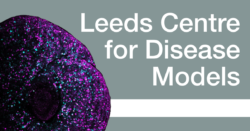Home
Mission Statement

At the Leeds Centre for Disease Models (DIMOLeeds) we bring together world-leading researchers from across a range of disciplines to undertake fundamental and applied research into the underlying mechanisms of inherited human diseases. The main focus of our research is in the recapitulation of disease states in model systems which allow greater interrogation of the mechanism and development of therapeutic approaches. Currently a major activity towards this research activity involves the generation of 3D organ-like models (organoids) and cultures derived from stem cells that recapitulate many of the complex processes that occur in the human body. These model systems can be used to investigate the effects of patient genomic variants or environmental factors on human cellular processes. As well as gaining a better understanding of disease mechanisms, we aim to use this knowledge to develop and test new therapies in the hope that they can be used as treatments in the future. To enhance our opportunity to develop more sophisticated models which approach the role and function of animal tissue, the Centre incorporates cross-disciplinary researchers alongside discovery biologists and clinicians, including engineers, physicists and chemists. The Centre depends highly on cross-faculty collaboration and is inclusive in its participants. Although, the core research activities are usually derived from the Faculties of Medicine and Health (FMH), Biological Sciences (FBS) and Engineering and Physical Sciences (FEPS), our activities draw from the entire University, particularly in areas such as education, translation, policy and ethics.
Objectives of the Centre
- To generate and characterise relevant human disease models in order to gain deeper insights into disease mechanisms and to identify and test therapeutics.
- To attract, and provide an interface between, basic discovery science research and industrial partners.
- To maximise impact by bringing together researchers and clinicians from different fields to facilitate, and accelerate, the translation of research into the clinic.
- To develop and share state-of-the-art technologies through collaboration within and external to the University.
